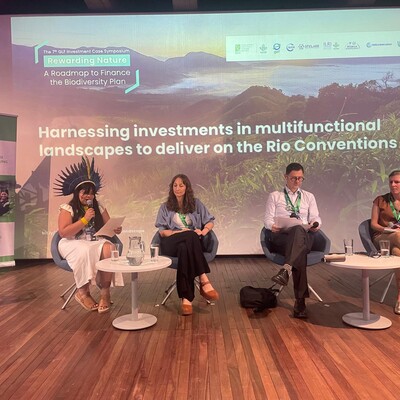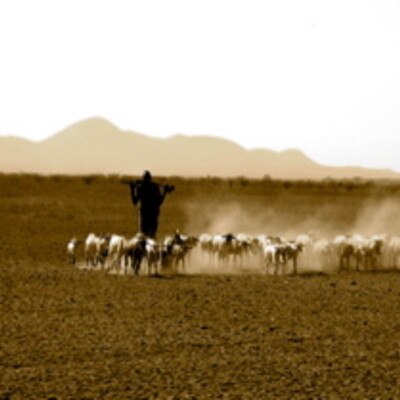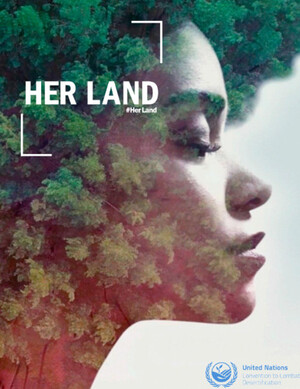

Supporting sustainable livestock value chains to restore large rangelands
Posted on
Rangelands are critical for biodiversity, ecosystem services, and the livelihoods of millions of pastoralists.
These uncultivated grasslands, shrublands, woodlands, wetlands, and savannas play very important roles for both domestic and wild animals who use their native vegetation for grazing and survival. However, degradation of these areas is high, and funding for their improvement and restoration is far lower than that for forests.
Enter the Sustainable Investments for Large-Scale Rangeland Restoration (STELARR) project, a groundbreaking initiative tackling this challenge head-on. Launched in late 2023, STELARR aims to unlock private sector finance for rangeland improvement and restoration through sustainable livestock value chains.
Funded by the Global Environment Facility and co-developed and implemented by the International Union for Conservation of Nature (IUCN), the International Livestock Research Institute (ILRI), and a wide variety of partners, the project works with researchers, communities, civil society organizations, governments, development agencies, and the private sector to return profits made from sustainable livestock and livestock value chain products back into the restoration of degraded rangelands.
Currently the project is undertaking a livestock sector analysis to identify the value chains that it will work with including at least one value chain in Latin America, Africa, and the Middle East and Central Asia. Potential value chains range from cashmere and mohair, to gums and resins, to pasture-fed beef.
To incentivize such investments, standards and certification schemes will be developed allowing value chain actors to benefit from product premiums if rangeland restoration commitments are put into practice. This will include a rangelands stewardship certification scheme being led by the Rangelands Stewardship Council, initiated by the Sustainable Fibre Alliance. In turn, appropriate mechanisms, tools, and guidelines for investments will be developed together with a global rangelands monitoring scheme to ensure wide adoption and use.
STELARR’s vision extends beyond and across individual projects. It aspires to inspire a renewed international commitment to rangeland restoration. By partnering with multiple stakeholders and integrating science with development and private sector investment, STELARR aims to build momentum for global action.
The project embodies the power of collective action to address pressing environmental challenges. By spearheading sustainable investments in rangeland restoration, it aims to safeguard vital ecosystems, foster inclusive development, and secure livelihoods for the future.
“With the International Year of Rangelands and Pastoralists 2026 on the horizon it is vital that we come together as stakeholders and supporters of rangelands to drive forward a process to better protect rangelands and restore them where needed. The commercial sector is an important and valuable actor in this regard,” said Fiona Flintan, senior scientist and ILRI’s lead of the project.
“The STELARR project is an exciting initiative that will develop the necessary linkages and incentives for rangeland restoration investments, most importantly benefiting local pastoralist communities who are facing more and more challenges to their livelihoods.”
Funded by the Global Environment Facility, STELARR is being implemented by IUCN and executed by ILRI in partnership with the Alliance of Bioversity International and CIAT, International Center for Agricultural Research for Dry Areas (ICARDA), Center for International Forest Research and World Agroforestry (CIFOR-ICRAF), and the Sustainable Fibre Alliance.
This story was first published on thegef.org.
Banner photo: The growing Mongolia cashmere value chain has led to rangeland degradation. STELARR aims to harness some of the profits made from cashmere for rangeland restoration. Photo by B.Wieland.
You may also like

ILRI News
Empowering every voice: Participatory GIS can transform resource management and gender inclusion. Case story of Isiolo County, Kenya

ILRI News
How much carbon can Kenyan grasslands store in their soils? Insights from the CarboGrass Project

ILRI News
Goats with aprons? A traditional anti-mating innovation used by Maasai communities in Tanzania
Related Publications

STELARR: Sustainable Investments for Large-Scale Rangeland Restoration
- International Livestock Research Institute

Empowering Community Rangeland Health Workers: A Novel Path to Sustainable Ecosystem Management in Ethiopia
- Eba, Bedasa










